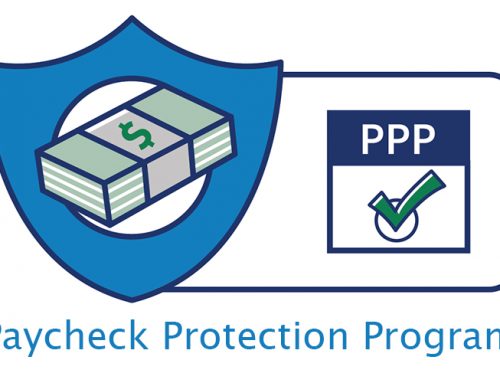Update 4/8/2020: The roll out of this program has been rocky, to say the least. Some banks (Wells Fargo being one) have announced that they are not participating. If you are having difficulty applying through your bank, we encourage you to contact a local community bank and ask if it will let you apply if you open a business checking account. You can always maintain your main checking account with your regular bank. Also, Congress is likely to add additional funds to the program in the coming days, so there should, hopefully, be no risk that any small business will be shut out.
For clients who use ADP for payroll (Accel is an ADP partner), two reports are available on the RUN ADP payroll website that provide all of the payroll data needed to complete a PPP loan application. Just navigate to the “CARES Loan Reports” section of the Reports menu. Other payroll providers may have similar reports.
***
The sweeping coronavirus stimulus law (the “CARES Act”) provides $349 billion for the Small Business Administration to guarantee paycheck protection loans to small businesses, which have been hit hard by virus-related declines or complete shutdowns in activity.
The legislation calls for the loan money to be distributed using the existing framework of the Small Business Administration’s 7(a) program, the agency’s flagship loan offering. The 7(a) program is a partnership between private financial lenders, which issue the loans, and the SBA, which guarantees them.
Here’s a look at how it will work.
Who is eligible for the loans?
Businesses and nonprofits with fewer than 500 employees are generally eligible, with some exceptions. Self-employed workers and gig workers, such as drivers for ride-sharing apps, are also able to apply for loans. Borrowers will need to have been in business as of Feb. 15, 2020, and paid employee salaries and payroll taxes, or paid independent contractors, or had self-employment income. Borrowers must also certify that their business has been negatively affected by the coronavirus crisis.
What kind of credit profile do I need to borrow?
The main underwriting standards for eligibility will be proof of payroll costs, and will be significantly relaxed compared with 7(a) loans issued during typical times, according to Senate staffers who helped draft the legislation. Trade groups and lenders expect the SBA to release detailed guidelines in coming days on underwriting and application criteria.
How do I apply?
The SBA guarantees the loans, so borrowers will need to apply through banks, credit unions and other lenders. Approximately 1,800 private lenders are already approved to issue 7(a) loans, and the SBA plans to issue new regulations that will make it possible for almost all FDIC-insured banks to make SBA loans. So the best way to begin is to approach your lender and inquire about applying for a 7(a) small business loan. If your lender doesn’t offer it, try another one.
How long will it take to get the money?
Lenders anticipate a “simple process” with disbursement of funds a few days after application. Lenders will begin accepting applications on April 3, 2020.
How much money can I apply for?
The maximum loan amount is capped at 2.5 times the business’s average monthly payroll costs, or $10 million, whichever is less. “Payroll costs” is defined to include wages, as well as health and retirement benefits, but not payroll taxes. There is a cap of $100,000 of annual costs that can be taken into account for each employee. For the self-employed, “payroll costs” means net earnings from self employment (capped at $100,000).
Do payments by a business to an independent contractor count as “payroll costs”?
Yes, according to the language of the CARES Act. However, the SBA has not agreed, so lenders may be reluctant to allow such costs.
What is the interest rate? Are there fees?
The annual interest rate is 1.0%, and the first payment is deferred for 6 months. The loan term is 2 years. It is expected that the government will cover the cost of any loan fees.
What if I can’t repay the loan?
There is a loan forgiveness component included in the bill for businesses that retain their workers or rehire ones that were laid off. Those businesses would be eligible for forgiveness on portions of their loans used for certain costs—including payroll, rent, mortgage obligations and utilities—that are incurred during an 8-week period starting on the loan’s origination date. The amount of forgiveness will take into account the number of workers retained or rehired.
Yes, but unless you rehire the employees, you may not qualify for the full loan forgiveness due to the 8-week calculation described above.
What other help is available?
Small businesses in all 50 states and the District of Columbia are eligible to apply for a separate SBA program that provides economic disaster loans. These are low-interest loans issued directly from the agency, and the program also provides a grant of $10,000 for payroll costs (that $10,000 would reduce the amount eligible to be forgiven in the 7(a) program described above). The loans carry a 3.75% interest rate for businesses and a 2.75% rate for nonprofits. Businesses that are interested in this program should apply directly with the SBA via the link above. Edit (4/16/2020): This program has been a disappointment, and the SBA has to date not released funds and recently announced that applicants can expect to eventually receive only $1,000 per employee.
Where can I go for more information?
Loan information will be available from a variety of lenders and at SBA.gov.

